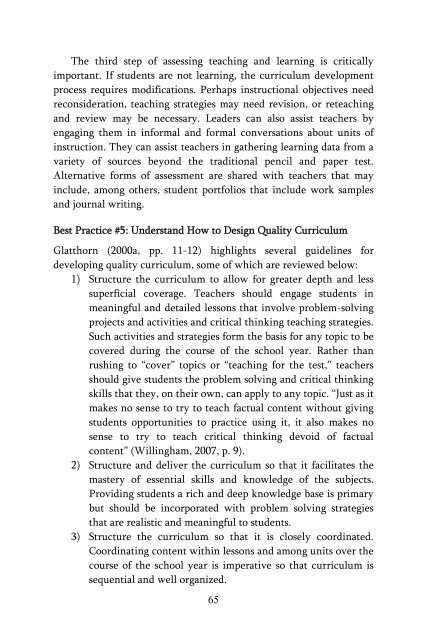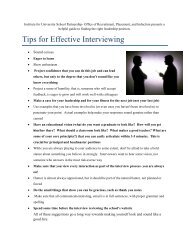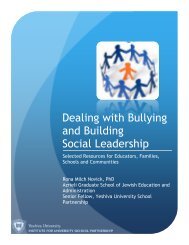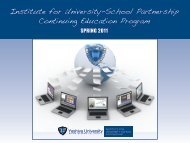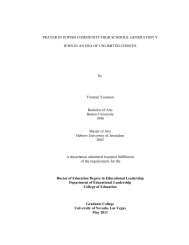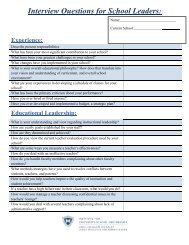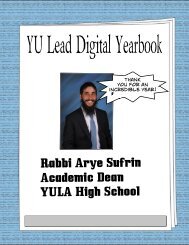Improving Instructional Quality in Jewish Day Schools and Yeshivot ...
Improving Instructional Quality in Jewish Day Schools and Yeshivot ...
Improving Instructional Quality in Jewish Day Schools and Yeshivot ...
Create successful ePaper yourself
Turn your PDF publications into a flip-book with our unique Google optimized e-Paper software.
The third step of assess<strong>in</strong>g teach<strong>in</strong>g <strong>and</strong> learn<strong>in</strong>g is criticallyimportant. If students are not learn<strong>in</strong>g, the curriculum developmentprocess requires modifications. Perhaps <strong>in</strong>structional objectives needreconsideration, teach<strong>in</strong>g strategies may need revision, or reteach<strong>in</strong>g<strong>and</strong> review may be necessary. Leaders can also assist teachers byengag<strong>in</strong>g them <strong>in</strong> <strong>in</strong>formal <strong>and</strong> formal conversations about units of<strong>in</strong>struction. They can assist teachers <strong>in</strong> gather<strong>in</strong>g learn<strong>in</strong>g data from avariety of sources beyond the traditional pencil <strong>and</strong> paper test.Alternative forms of assessment are shared with teachers that may<strong>in</strong>clude, among others, student portfolios that <strong>in</strong>clude work samples<strong>and</strong> journal writ<strong>in</strong>g.Best Practice #5: Underst<strong>and</strong> How to Design <strong>Quality</strong> CurriculumGlatthorn (2000a, pp. 11-12) highlights several guidel<strong>in</strong>es fordevelop<strong>in</strong>g quality curriculum, some of which are reviewed below:1) Structure the curriculum to allow for greater depth <strong>and</strong> lesssuperficial coverage. Teachers should engage students <strong>in</strong>mean<strong>in</strong>gful <strong>and</strong> detailed lessons that <strong>in</strong>volve problem-solv<strong>in</strong>gprojects <strong>and</strong> activities <strong>and</strong> critical th<strong>in</strong>k<strong>in</strong>g teach<strong>in</strong>g strategies.Such activities <strong>and</strong> strategies form the basis for any topic to becovered dur<strong>in</strong>g the course of the school year. Rather thanrush<strong>in</strong>g to “cover” topics or “teach<strong>in</strong>g for the test,” teachersshould give students the problem solv<strong>in</strong>g <strong>and</strong> critical th<strong>in</strong>k<strong>in</strong>gskills that they, on their own, can apply to any topic. “Just as itmakes no sense to try to teach factual content without giv<strong>in</strong>gstudents opportunities to practice us<strong>in</strong>g it, it also makes nosense to try to teach critical th<strong>in</strong>k<strong>in</strong>g devoid of factualcontent” (Will<strong>in</strong>gham, 2007, p. 9).2) Structure <strong>and</strong> deliver the curriculum so that it facilitates themastery of essential skills <strong>and</strong> knowledge of the subjects.Provid<strong>in</strong>g students a rich <strong>and</strong> deep knowledge base is primarybut should be <strong>in</strong>corporated with problem solv<strong>in</strong>g strategiesthat are realistic <strong>and</strong> mean<strong>in</strong>gful to students.3) Structure the curriculum so that it is closely coord<strong>in</strong>ated.Coord<strong>in</strong>at<strong>in</strong>g content with<strong>in</strong> lessons <strong>and</strong> among units over thecourse of the school year is imperative so that curriculum issequential <strong>and</strong> well organized.65


